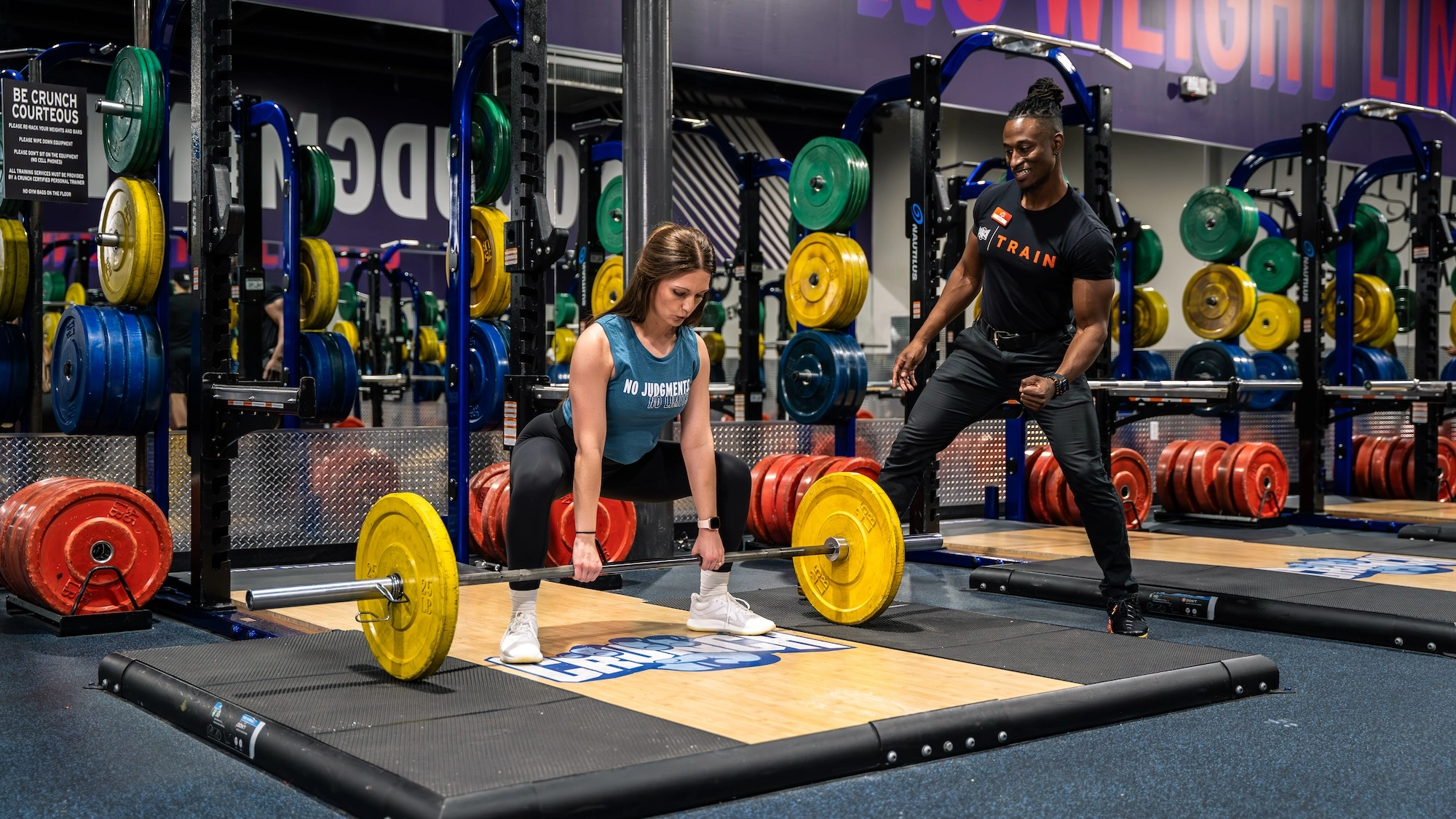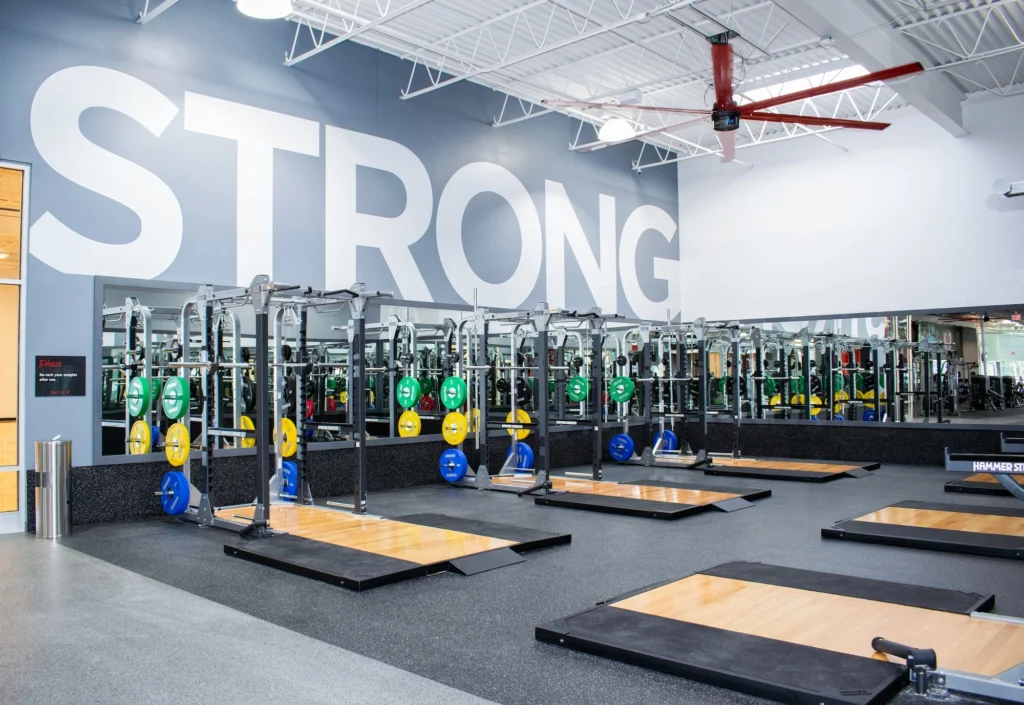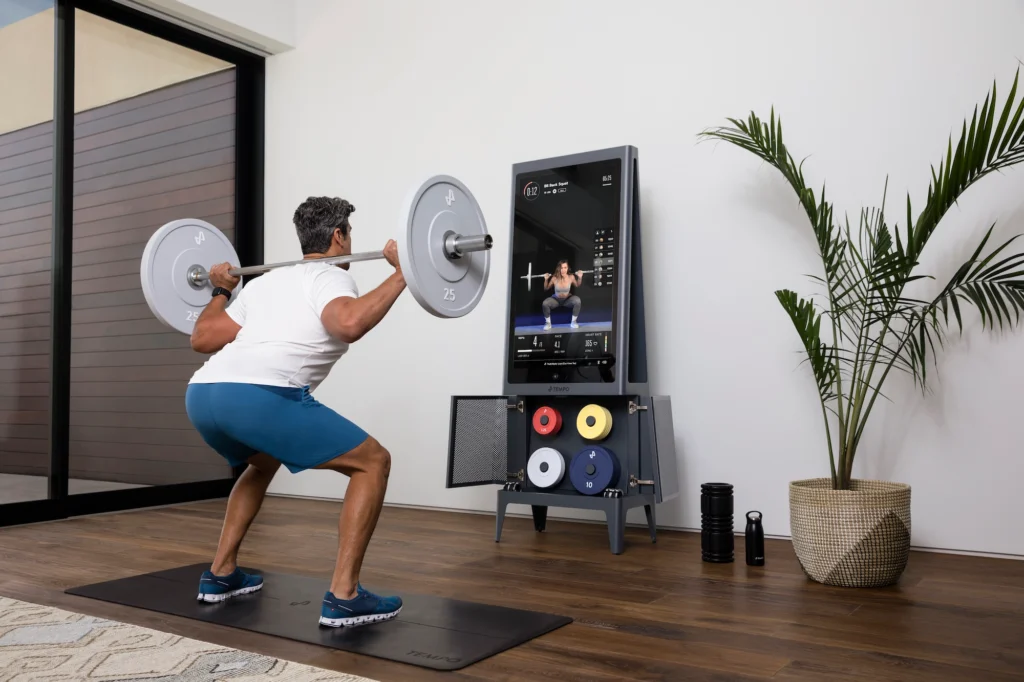The Fitness & Wellness Trends To Watch in 2025

The global wellness market is projected to grow to nearly $9 trillion in 2028 as consumers embrace new ways of living, moving and being.
The rise of longevity services, GLP-1 weight-loss drugs and holistic wellness presents massive opportunities for fitness brands, but also exposes the industry to increased competition from new entrants. Meanwhile, the popularity of strength training is reshaping the way gyms look across the globe, while the rise of AI begins to transform the way fitness brands do business.
To get you ready for a new year, Athletech News breaks down the top fitness and wellness trends to watch in 2025:
Longevity & Recovery Become Big Business
The longevity movement took off in 2024 as medical professionals, influencers and everyday wellness enthusiasts alike became enthralled with the idea that scientific breakthroughs and lifestyle choices can help people live better, for longer.
Amid this backdrop, longevity and recovery services are steadily making their way inside gyms, health clubs and studios. High-end brands like Life Time and Equinox now offer their members access to services including weight-loss support, biomarker blood testing and personalized health plans (for an extra fee), pushing us closer to a reality where the gym replaces – or at least competes with – the doctor’s office.
On the more modest end of the pricing spectrum, high-value, low-price (HVLP) gym chains including Crunch Fitness, Chuze Fitness, EōS Fitness and others are adding recovery modalities like infrared saunas, along with “recovery rooms” stocked with massage guns, massage chairs and more. With premium memberships at HVLP gyms available for $40/month or less, it’s becoming easier than ever to get a holistic wellness experience at your local big box.
The rise of longevity isn’t relegated to gyms and studios, either. Wellness and longevity centers are popping up across the United States, offering everything from GLP-1s to cryotherapy to testosterone replacement therapy (TRT). Restore Hyper Wellness is the leader with over 200 locations, but emerging brands like Next Health, Serotonin Centers, Lindora and Humanaut Health are projecting growth in the years ahead.
Direct-to-consumer longevity is big business, too. According to a survey conducted by YouGov, 45% of Americans say they’re taking supplements to fight the aging process. Timeline, a maker of supplements with an active ingredient designed to slow aging at the cellular level, raised $66 million in funding in early 2024.
Those bullish on the science of longevity believe the movement is just starting to gain a critical mass in America.
“Today, when I talk to people about slowing down aging, nine out of 10 are telling me, “I shouldn’t be doing it,’” Anar Isman, the CEO of longevity startup AgelessRx, told ATN. “I envision a world in five to 10 years where that’s going to completely flip on its head, where nine out of 10 people are going to be saying, ‘You don’t want to slow down aging? What’s wrong with you?’”

Fitness Wearables Evolve Into Healthcare Companions
Fitness wearables are more popular than ever – nearly half of all consumers surveyed by McKinsey reported having purchased a fitness wearable at some point in time. Wearables have also come a long way from the days of simply tracking steps and calories burned from workouts.
As tech advances, wearable makers are envisioning a future where your smartwatch, smart ring or other tracking device becomes your personal health companion.
Smart ring giant Oura acquired metabolic health company Veri earlier this year and has partnered with Dexcom, makers of the first FDA-cleared over-the-counter continuous glucose monitor (CGM) device. Oura and Dexcom are working to create an ecosystem where users can understand how their glucose levels interact with metrics like activity, sleep and stress. Oura is also highly active in women’s health, adding features like Cycle Insights and Pregnancy Insights, along with perimenopause features.
“Wearable tech is for anyone who wants to better understand the state of their health and live more optimally, for longer,” Oura CEO Tom Hale has said.
Garmin is also working to make its smartwatches part of the future of healthcare, something the brand has termed “smartwatch-enabled digital health.” Thanks to Garmin Health, Garmin wearables have been part of more than 1,000 research studies in areas including sleep, well-being, rehabilitation, physical activity, and disease management.
Not to be outdone, Apple has also signaled its ambitions to play a bigger role in healthcare in the years ahead, with Apple Watches at the forefront.
“It’s clear to me that if you zoom out way into the future, and you look back and ask what Apple’s biggest contribution was, it will be in the health area,” Apple CEO Tim Cook told “Wired” in December.

Strength Training Is Here To Stay. Pilates Might Be, Too
We named strength training as one of our trends to watch in 2024, and the modality has only increased in popularity since then. Appreciated for its anti-aging, functional and metabolism-boosting benefits, strength training is everywhere, from gyms to TikTok. Even Peloton has embraced the modality, releasing a dedicated strength training app in hopes of bringing more fitness fans into its ranks.
Big-box gyms across the country are racing to add strength training equipment like Olympic lifting platforms and other free weights to their fitness floors while ditching cardio equipment. Some gyms are even rethinking their group exercise offerings to account for the rise of strength – Vasa Fitness will introduce Studio LFT, a group-based strength training class featuring power racks, benches and plyometric boxes, in early 2025.
Strength training isn’t just lifting heavy weights, though. Pilates’ surge in popularity over the past few years is thanks in no small part to a rise in awareness around the benefits of strength training. Functional fitness concepts like Pvolve have also become highly popular since the pandemic, buoyed by women embracing strength training in larger numbers than ever before.
Pvolve president Julie Cartwright believes strength training is here to stay since people are becoming more aware of the science-backed benefits of adding muscle, especially for longevity.
“I really do think it’s education in the marketplace,” Cartwright told ATN when asked about strength training’s rise and staying power. “Post-COVID, we’re all taking a more active role in our own self-care, in living better, longer. There’s (more) messaging about the importance of muscle mass and what it does for your longevity and health span.”

Will AI Impact Fitness Experiences?
AI is changing the world, but will it actually change the way we work out?
Much has been made in fitness industry circles about the promises (and potential nightmares) of artificial intelligence, but if you ask most gym-goers, the way they participate in fitness probably hasn’t changed too much since before the emergence of ChatGPT.
“I think much of the AI application in the gym space has been somewhat overhyped,” Matt Wright, the vice president of growth and development at gym chain Healthtrax Fitness & Wellness, has told ATN.
Can the fitness industry make AI a bigger part of the in-gym experience? Should it?
Future is using AI to democratize access to virtual personal training, Lumin fitness has big expansion plans as the world’s first AI-powered boutique fitness studio and at-home fitness brands like Tempo and Tonal are using AI to make strength training effective and easy for newbies and fitness buffs alike.
But as we head into 2025, those brands remain the exceptions rather than the norm. Despite this, some insiders believe it’s just a matter of time before the gym is transformed by AI and other tech.
“I think in the next 5, 10, years in the U.S., you’re going to see transformative changes within gyms, where technology and AI – and personalization of training programs – is going to take place,” Marc Magliacano, a managing partner at private equity firm L Catterton, said during ATN’s DISRUPT 2024 video series earlier this year.
If Magliacano’s AI prediction comes to pass, it could spell bad news for real-life personal trainers.
“Unfortunately, I believe that personal training from a human perspective will be under review, frankly, just to say it nicely,” he said.

Investors Are Bullish on Fitness Again
The fitness and wellness industry has rebounded quite nicely from the pandemic, and investors are taking notice.
2024 was marked by high-profile deals including L Catterton’s acquisition of Solidcore and the firm’s investment into fitness tech brand EGYM, as well as the mega merger between Anytime Fitness parent company Self Esteem Brands and Orangetheory Fitness.
Meanwhile, private equity groups continue to pour money into large franchisee groups, enabling sophisticated operators to create large portfolios of franchised gym brands in systems including Crunch Fitness, Planet Fitness and Anytime Fitness.
Consolidation is also happening at the corporate level as larger fitness brands buy up smaller ones. Barre3, a barre fitness franchise brand with around 200 locations nationwide, has acquired competitors including The Barre Code and Barre Centric, while gym giant LA Fitness acquired XSport Fitness earlier this year.
Experts have told ATN they expect to see more big-time investments in fitness brands in 2025 as people embrace health and wellness – and as the industry moves further away from the carnage of the pandemic.
“2025 is going to be a huge year for fitness” in terms of deal-making, Jeremy Hirsch, a senior vice president in Houlihan Lokey’s consumer group, predicts. “You’re going to have a lot of investors spending a lot of time on this category.”
Related
Gym owner bans new members in January, has reasons for…
Made a New Year's resolution to get fit and healthy again?One gym owner says good luck with that — because there's no place for new joiners in the month of J
This AI-powered strength machine could be Peloton for gym rats,…
amp fitness, a new AI-powered strength machine, is on display at CES 2025It’s backed by influencers such as online strength coach Chris Heria and actor Terry
Jennifer Aniston, 55, Transformed Her Body By Working Out Less
If your New Year’s fitness goals include feeling stronger, moving smarter, and actually enjoying your workouts, Jennifer Aniston’s advice might be exactly w










:max_bytes(150000):strip_icc():focal(564x685:566x687)/dallas-fire-burns-pet-shop-1425-eb5ba5886ba24eb69e88e9d51c323868.jpg)
